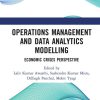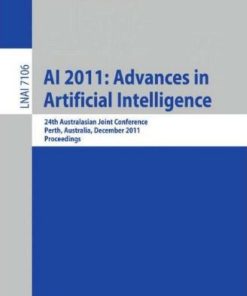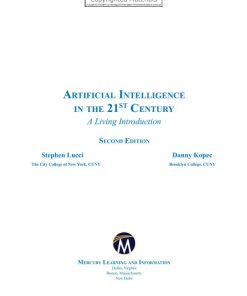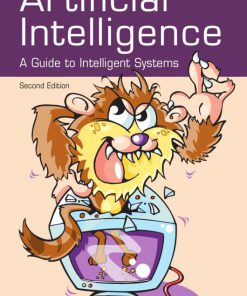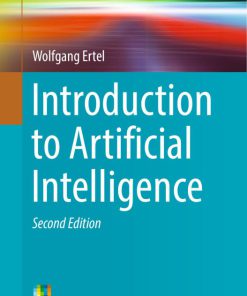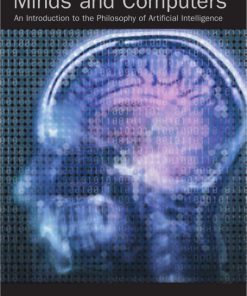Introduction to Artificial Intelligence 1st edition by Mariusz Flasinski ISBN 3319820168 9783319820163
$50.00 Original price was: $50.00.$25.00Current price is: $25.00.
Authors:Mariusz Flasiński (auth.) , Series:Artificial Intelligence [67] , Author sort:Flasiński, Mariusz , Languages:Languages:eng , Published:Published:Jun 2016 , Publisher:Springer
Introduction to Artificial Intelligence 1st edition by Mariusz Flasinski – Ebook PDF Instant Download/Delivery. , 978-
Full download Introduction to Artificial Intelligence 1st Edition after payment
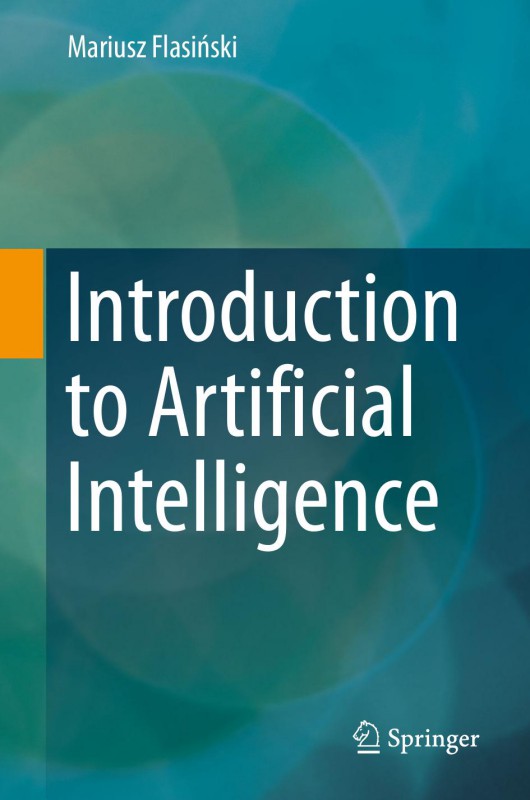
Product details:
ISBN 10: 3319820168
ISBN 13: 978-3319820163
Author: Mariusz Flasinski
In the chapters in Part I of this textbook the author introduces the fundamental ideas of artificial intelligence and computational intelligence. In Part II he explains key AI methods such as search, evolutionary computing, logic-based reasoning, knowledge representation, rule-based systems, pattern recognition, neural networks, and cognitive architectures. Finally, in Part III, he expands the context to discuss theories of intelligence in philosophy and psychology, key applications of AI systems, and the likely future of artificial intelligence. A key feature of the author’s approach is historical and biographical footnotes, stressing the multidisciplinary character of the field and its pioneers.
The book is appropriate for advanced undergraduate and graduate courses in computer science, engineering, and other applied sciences, and the appendices offer short formal, mathematical models and notes to support the reader.
Introduction to Artificial Intelligence 1st Table of contents:
Chapter 1: History of Artificial Intelligence
- 1.1 Origins and Evolution of AI
- 1.2 Key Milestones in AI Development
- 1.3 AI in the Early Years: From Turing to Modern AI
- 1.4 Breakthroughs in AI Research and Technology
- 1.5 The Current State of AI: Achievements and Challenges
Chapter 2: Symbolic Artificial Intelligence
- 2.1 Introduction to Symbolic AI
- 2.2 Representing Knowledge with Symbols
- 2.3 Logic and Reasoning in Symbolic AI
- 2.4 The Role of Expert Systems
- 2.5 Applications of Symbolic AI
Chapter 3: Computational Intelligence
- 3.1 Introduction to Computational Intelligence
- 3.2 Differences Between Symbolic AI and Computational Intelligence
- 3.3 Key Techniques in Computational Intelligence
- 3.4 Fuzzy Logic and Its Applications
- 3.5 Genetic Algorithms and Evolutionary Strategies
Chapter 4: Search Methods
- 4.1 Problem-Solving with Search Algorithms
- 4.2 Uninformed Search Techniques (e.g., BFS, DFS)
- 4.3 Informed Search and Heuristics (e.g., A* Search)
- 4.4 Local Search and Optimization Algorithms
- 4.5 Applications of Search in AI
Chapter 5: Evolutionary Computing
- 5.1 Introduction to Evolutionary Computing
- 5.2 Genetic Algorithms
- 5.3 Genetic Programming
- 5.4 Evolution Strategies and Differential Evolution
- 5.5 Applications of Evolutionary Computing
Chapter 6: Logic-Based Reasoning
- 6.1 Introduction to Logic-Based Reasoning
- 6.2 Propositional and Predicate Logic
- 6.3 Reasoning with First-Order Logic
- 6.4 Inference Mechanisms
- 6.5 Applications in AI
Chapter 7: Structural Models of Knowledge Representation
- 7.1 Knowledge Representation in AI
- 7.2 Frames and Semantic Networks
- 7.3 Ontologies and Taxonomies
- 7.4 Conceptual Graphs
- 7.5 Applications of Knowledge Representation
Chapter 8: Syntactic Pattern Analysis
- 8.1 Introduction to Pattern Recognition
- 8.2 Syntactic Pattern Recognition Techniques
- 8.3 Grammar-Based Pattern Analysis
- 8.4 Applications in Natural Language Processing (NLP)
- 8.5 Case Studies of Syntactic Pattern Recognition
Chapter 9: Rule-Based Systems
- 9.1 Fundamentals of Rule-Based Systems
- 9.2 Expert Systems and Knowledge Bases
- 9.3 Inference Engines
- 9.4 Forward and Backward Chaining
- 9.5 Applications of Rule-Based Systems
Chapter 10: Pattern Recognition and Cluster Analysis
- 10.1 Introduction to Pattern Recognition
- 10.2 Statistical Methods for Pattern Recognition
- 10.3 Clustering Algorithms (e.g., K-means, DBSCAN)
- 10.4 Applications of Pattern Recognition and Clustering
Chapter 11: Neural Networks
- 11.1 Introduction to Neural Networks
- 11.2 Structure and Types of Neural Networks
- 11.3 Training Neural Networks: Backpropagation
- 11.4 Deep Learning and Convolutional Neural Networks (CNNs)
- 11.5 Applications of Neural Networks
Chapter 12: Reasoning with Imperfect Knowledge
- 12.1 Handling Uncertainty in AI
- 12.2 Probabilistic Reasoning: Bayesian Networks
- 12.3 Fuzzy Logic and Imprecise Information
- 12.4 Applications in Decision Making
Chapter 13: Defining Vague Notions in Knowledge-Based Systems
- 13.1 The Role of Vagueness in AI Systems
- 13.2 Defining Fuzzy and Vague Concepts
- 13.3 Reasoning with Vague Information
- 13.4 Applications of Vague Knowledge Representation
Chapter 14: Cognitive Architectures
- 14.1 Overview of Cognitive Architectures
- 14.2 ACT-R and Soar Cognitive Models
- 14.3 Cognitive Modeling and Artificial Agents
- 14.4 Applications in Robotics and AI Systems
Chapter 15: Theories of Intelligence in Philosophy and Psychology
- 15.1 Philosophical Views on Intelligence
- 15.2 Theories of Human Cognition and Intelligence
- 15.3 AI vs Human Intelligence
- 15.4 The Turing Test and its Critiques
Chapter 16: Application Areas of AI Systems
- 16.1 AI in Healthcare
- 16.2 AI in Autonomous Vehicles
- 16.3 AI in Natural Language Processing
- 16.4 AI in Robotics and Manufacturing
- 16.5 AI in Finance and Business
- 16.6 AI in Entertainment and Gaming
Chapter 17: Prospects of Artificial Intelligence
- 17.1 Future Trends in AI Research
- 17.2 AI Ethics and the Impact on Society
- 17.3 AI and Job Automation
- 17.4 The Role of AI in Solving Global Problems
- 17.5 The Future of Human-AI Collaboration
People also search for Introduction to Artificial Intelligence 1st:
an introduction to artificial intelligence nptel
introduction to artificial intelligence (ai) by ibm
introduction to artificial intelligence and expert systems pdf
baed-bens2122 introduction to artificial intelligence
best book introduction to artificial intelligence


